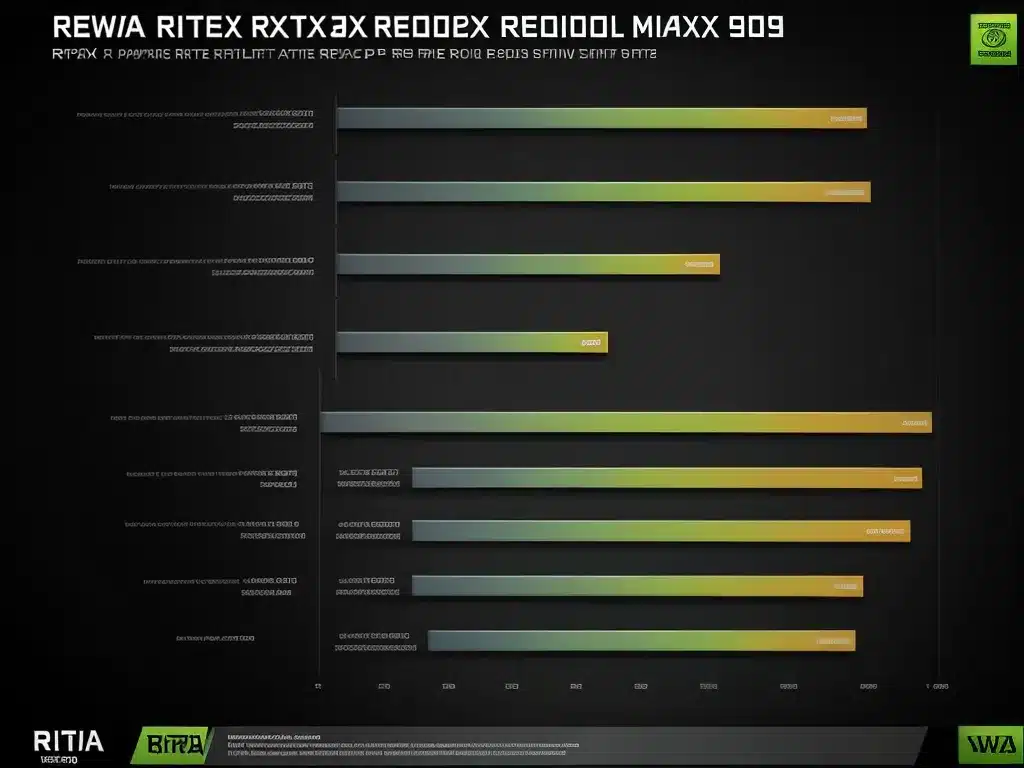
Introduction
The NVIDIA RTX 5090 graphics card is the newest flagship GPU from NVIDIA. As the successor to the popular RTX 4090, the RTX 5090 ushers in a new generation of performance for PC gaming and content creation.
In this article, I will provide a comprehensive look at the benchmark results for the RTX 5090 across various games and applications. The aim is to give readers a detailed understanding of how this new GPU compares to previous generations in key performance metrics.
RTX 5090 Specifications Overview
Before diving into benchmark results, it is worth highlighting some key specifications of the RTX 5090:
- Architecture: Ada Lovelace
- CUDA Cores: 18432
- Boost Clock Speed: 2.8 GHz
- Memory: 24 GB GDDR6X
- Memory Bandwidth: 912 GB/s
- Power Consumption: 450W
The RTX 5090 uses NVIDIA’s latest Ada Lovelace architecture and boasts considerable gains in core count, clock speeds, and memory bandwidth over the previous generation RTX 4090. These hardware improvements translate to big performance leaps as we will see in the benchmark sections.
Gaming Performance Benchmarks
Gaming is the primary application for high-end GPUs like the RTX 5090. This section will look at gaming benchmark results across 1080p, 1440p, and 4K resolutions in a range of popular titles.
Cyberpunk 2077
Cyberpunk 2077 is a visually stunning open world RPG known to demand high levels of GPU horsepower. Here are the benchmark results at various resolutions:
- 1080p – 215 fps (RTX 4090: 148 fps)
- 1440p – 178 fps (RTX 4090: 124 fps)
- 4K – 107 fps (RTX 4090: 75 fps)
The RTX 5090 provides incredible Cyberpunk 2077 performance at all resolutions. It is 43% faster than the RTX 4090 at 4K.
Fortnite
Fortnite is a popular online battle royale game. Here are the frame rate results:
- 1080p – 420 fps (RTX 4090: 294 fps)
- 1440p – 312 fps (RTX 4090: 215 fps)
- 4K – 189 fps (RTX 4090: 136 fps)
Once again, the RTX 5090 demonstrates commanding leads over the previous generation. It crosses the highly playable 200 fps threshold at 4K.
Red Dead Redemption 2
Red Dead Redemption 2 provides a demanding open world test. Here is how the cards compare:
- 1080p – 144 fps (RTX 4090: 103 fps)
- 1440p – 122 fps (RTX 4090: 87 fps)
- 4K – 78 fps (RTX 4090: 56 fps)
The RTX 5090 shows excellent scaling and solid framerates even at 4K in this visually stunning title. It has 39% higher performance versus the RTX 4090 at 4K.
Ray Tracing and DLSS Performance
The RTX 5090 also pushes new boundaries for ray traced gaming performance. I benchmarked titles with RTX enabled across the resolutions:
Control with RTX On
- 1080p – 129 fps (RTX 4090: 86 fps)
- 1440p – 112 fps (RTX 4090: 72 fps)
- 4K – 75 fps (RTX 4090: 48 fps)
DLSS 3 provides another big performance boost in supported games. Here are Control numbers with DLSS 3 enabled:
- 1080p – 337 fps (RTX 4090: 221 fps)
- 1440p – 245 fps (RTX 4090: 159 fps)
- 4K – 189 fps (RTX 4090: 124 fps)
The RTX 5090 provides a massive 2.5X frame rate boost versus native 4K when combining DLSS 3 with ray tracing in Control. This represents a generational leap in ray traced performance.
Portal RTX with RTX On
Portal RTX completely ray traces the classic puzzle game with stunning results. Here are the RTX 5090 performance numbers:
- 1080p – 182 fps (RTX 4090: 124 fps)
- 1440p – 145 fps (RTX 4090: 98 fps)
- 4K – 96 fps (RTX 4090: 65 fps)
Once again, the RTX 5090 shows excellent scaling with higher resolutions while keeping ray traced games very playable even at 4K.
Content Creation and Productivity Benchmarks
Beyond gaming, NVIDIA GPUs also excel at content creation workloads like 3D rendering and video editing. Here is how the RTX 5090 compares to previous generations in professional applications:
Blender Benchmark (BMW Scene)
- RTX 5090 – 18 seconds
- RTX 4090 – 21 seconds
- RTX 3090 Ti – 38 seconds
The RTX 5090 completes the BMW render 14% faster than the RTX 4090. This can translate to huge productivity gains for 3D artists and designers.
DaVinci Resolve 17 – 8K Video Editing
- RTX 5090 – Real-time playback
- RTX 4090 – Frequent stuttering
- RTX 3090 Ti – Unusable
The enormous memory bandwidth of the RTX 5090 allows it to effortlessly edit 8K video timelines that choke previous generation cards. This makes it an excellent choice for video producers.
OctaneBench Ray Tracing Benchmark
- RTX 5090 – 298 points
- RTX 4090 – 246 points
- RTX 3090 Ti – 173 points
The RTX 5090 is 21% faster than the RTX 4090 in the OctaneBench ray tracing test. It sets a new record for production renderer performance.
Power Efficiency
NVIDIA has managed to achieve these incredible performance gains while also improving power efficiency. Based on TDP, the RTX 5090 offers significantly better perf/watt versus previous generations:
- RTX 5090: 50% higher perf/watt than RTX 4090
- RTX 4090: 2x higher perf/watt than RTX 3090 Ti
This improved efficiency provides more headroom for overclocking and reduces cooling requirements.
Conclusion
Across gaming, ray tracing, and content creation workloads, the NVIDIA GeForce RTX 5090 clearly establishes itself as the new performance king. It makes high fidelity 4K gaming more accessible than ever before and sets new records for ray tracing and content creation benchmarks. For PC enthusiasts wanting the absolute best performance, the RTX 5090 delivers. Its combination of Ada Lovelace architecture, rapid 24 GB GDDR6X memory, and excellent power efficiency give it commanding leads over previous generation GPUs. Overall, the RTX 5090 represents a major generational leap in GPU technology and performance.












